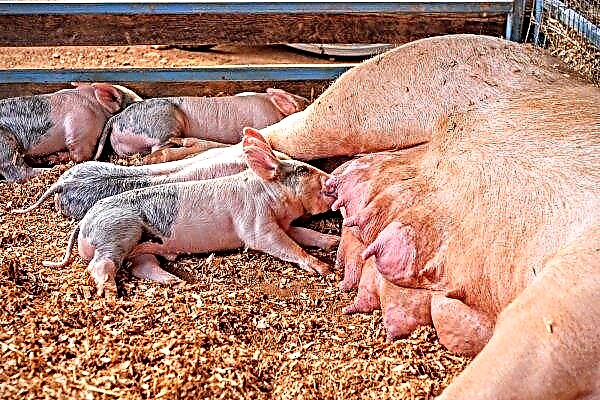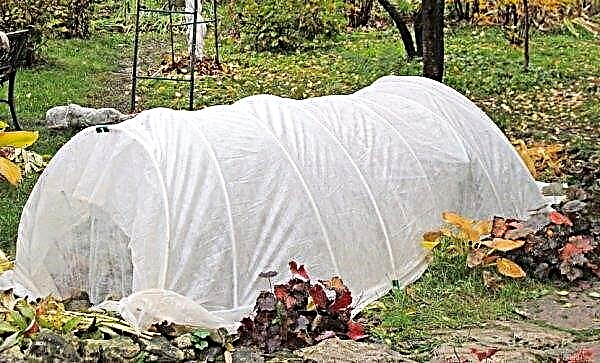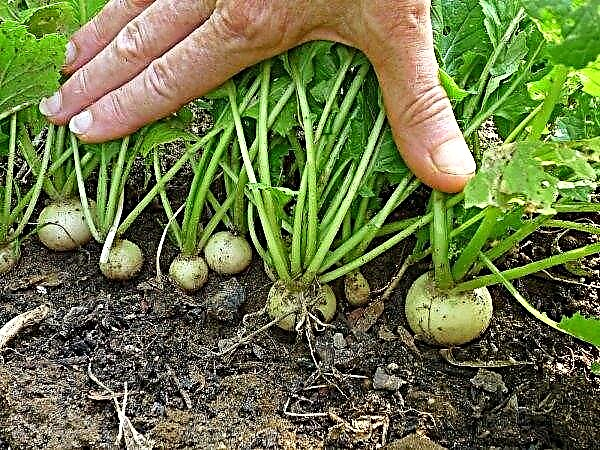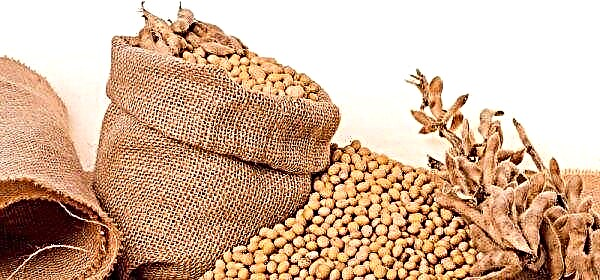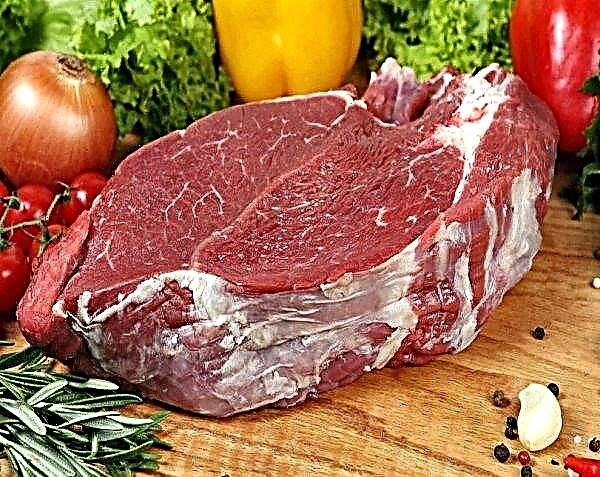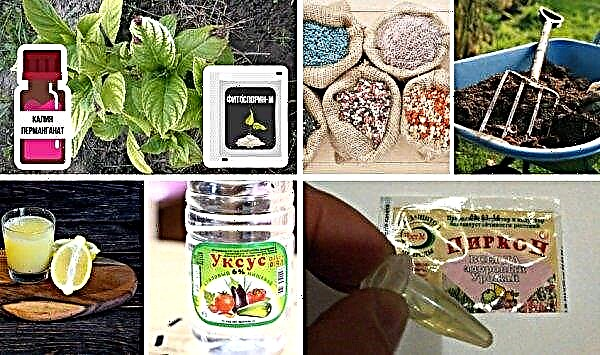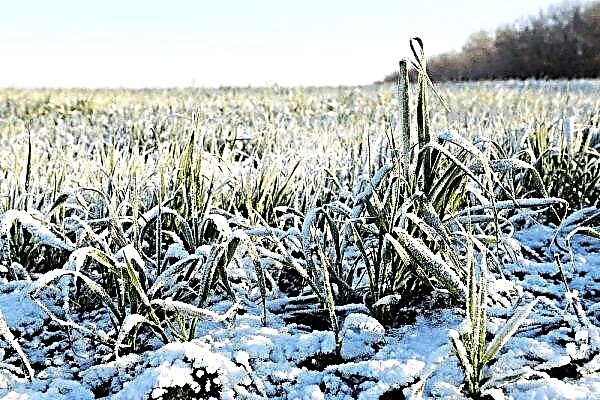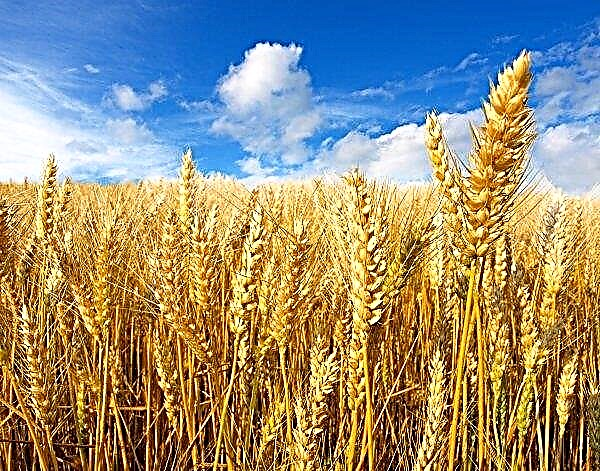The most popular cereal on the globe is wheat, and from a botanical point of view it is divided into two groups - hard varieties and soft ones. These varieties differ from each other in some features of the chemical composition, and for their successful cultivation certain climate conditions are needed. The flour obtained from grain also has certain distinctive characteristics, therefore it has different uses. Read more about the main differences between hard and soft grades of cereal - later in the article.
Regions for growing soft and hard varieties
Traditionally, soft wheat cultivars prevail around the world, and hard varieties are grown much less frequently. Each of these types of crops needs certain climate conditions, which have a decisive influence on the volume and quality of the crop.
Soft varieties grow well in a climate characterized by high air humidity. This plant is grown in such regions:
- countries of Western Europe;
- Russia;
- Australia;
- Ukraine;
- CIS countries.

Unlike soft varieties, hard cereals require dry air, which is why they are grown in such regions:
- Canada;
- USA;
- Asia;
- Argentina;
- North Africa.

The main differences between durum and soft wheat
Different varieties of wheat differ among themselves in some botanical features and even chemical composition. Representatives of each of these species have characteristic external features, and flour with certain characteristics is produced from the obtained grain. Therefore, hard and soft wheat are characterized by different uses, due to differences in the grain structure of each of these cereals.
Did you know? The leaders in wheat cultivation are China, India and the USA. By crop area, this crop ranks first among other agricultural plants.
Appearance
Wheat is a cereal crop with a stem, leaves and ears, inside which grains are contained. But representatives of hard and soft grades of this culture are slightly different in their external signs.
The main biological features of the soft varieties of cereal:
- thin stalk with a cavity inside;
- grain surface is painted white or reddish;
- the spike has a moderately loose structure;
- spines are short processes;
- large seeds have a rounded shape.

Hard varieties of culture are characterized by such distinguishing features:
- stalk with thick walls, filled with connective tissue;
- seeds are small and elongated;
- the ears are dense;
- awnings are long, grow parallel to the stem;
- the surface of the grain is brown or yellowish.
Did you know? Wheat was grown in ancient Egypt. At that time, cereals were ground into flour with the help of bulls, who crushed whole grains with their strong hooves.
Composition and calorie content
Due to the presence of biological differences, hard and soft grades of cereal have a different chemical composition. Grains also differ in protein and some other elements.
Nutrition value of 100 g of soft wheat:
- calorie content - 305 kcal;
- proteins - 11.8 g;
- fats - 2.2 g;
- carbohydrates - 59.5 g.

The product contains various vitamins (B, D, K, E, P), as well as iron, molybdenum, cobalt, silicon, manganese, sulfur, copper, calcium, iodine, potassium, zinc, fluorine.
Nutrition value of 100 g of hard varieties of culture:
- calorie content - 304 kcal;
- proteins - 13 g;
- fats - 2.5 g;
- carbohydrates - 57.5 g.

Durum wheat contains more gluten and carotenoids. All the same components are present in its composition as in soft varieties. In addition, the product contains a high percentage of fiber and starch, as well as pectin, fructose, essential oils, hemicellulose, raffinose and lactose, essential amino acids (threonine, valine, leucine, etc.).
Grain structure
Differences in chemical composition also determine the unequal grain structure in hard and soft grades of cereal. In the first case, the seeds are characterized by increased density, and in the second, they have a more mealy and softened texture. This is due to the fact that hard varieties of cereal contain small and durable inclusions of starch, which are not present in soft varieties.
Important! To increase the size of the ear and make the grain larger, wheat needs to be fed with potassium and phosphorus. The application of these fertilizers is carried out at the stage of tillering and heading of plants.
Fields of application
Usually wheat is grown to produce flour. But hard and soft grains have different characteristics, therefore the product obtained as a result of grinding it is used in different fields.
Hard flour is characterized by a fine-grained structure, and also contains a lot of gluten and gluten. It is painted in a delicate cream color and, upon contact with water, actively absorbs liquid. Such a product is used for the mass production of high-quality pasta, because it allows you to knead a thick and dense dough that will hold its shape well even after heat treatment. Hard flour is sometimes used to bake flour products made from yeast dough, which do not stale for a long time.

Flour obtained from soft grains is colored white and contains much less gluten, having a more friable structure. It does not absorb moisture well, so it is best suited for baking and confectionery, allowing you to knead sticky, loose dough.
The difference in cultivation technology
The rules for growing cereals of hard and soft varieties are practically no different, but there are certain nuances in the technology of sowing. It is equally important to observe crop rotation, planting each type of cereal only after certain predecessors. The rest of the agricultural technology of durum and soft wheat has no differences and is carried out according to the same scheme.
Important! In the manufacture of pasta from flour of soft varieties of wheat, the packaging of the product is labeled with the letter B. Symbol A denotes the use of hard varieties of cereal crops.
The main distinguishing features of agricultural technology of soft varieties of cereal:
- cereal can be sown on black steam, as well as after potatoes, clover, legumes;
- in the fall, the field is plowed to a depth of 20 cm in order to destroy the larvae wintering in the ground, as well as to promote soil moisture;
- if wheat is sown after legumes, then carry out an additional procedure - disk peeling;
- before planting seeds in the soil, harrowing and cultivation are carried out, eliminating large earth clods;
- seed planting depth - about 3 cm;
- immediately after sowing, you need to perform soil rolling - it will provide the best contact of the seeds with the soil.

The technology for growing durum wheat includes such characteristic differences:
- the culture is recommended to be sown only on black steam, i.e. plants need a lot of nutrients;
- the soil should be sufficiently moist - the required moisture content in the upper layer is at least 20 mm;
- in autumn, dump plowing is performed in order to better saturate the soil with moisture at the time of sowing;
- presowing cultivation is performed to a depth of about 8 cm;
- the depth of embedment of planting material in the soil is from 4 to 8 cm.
Important! Hard wheat reacts very poorly to a lack of moisture in the soil. To maintain high yields, crop fields must be watered during a drought.
Which wheat is healthier
Both varieties of wheat have a rich chemical composition, therefore they can bring great benefits to the human body. But in hard grains there are more minerals, protein and fiber, which have a beneficial effect on the work of many organs. Therefore, pasta and pastries from durum wheat flour are considered more nutritious and healthy.
Beneficial features
All types of wheat contain many vitamins and nutrients, a significant part of which remains in the flour obtained from grain.
- The latter is widely used in the food industry, and products from it have numerous useful properties:
- promote muscle growth;
- strengthen the nervous system;
- beneficial effect on the condition of the skin, hair and nails;
- stimulate brain activity;
- increase the body's resistance to viruses and bacteria;
- improve overall health;
- help fight depression;
- increase hemoglobin in the blood;
- help cleanse the body of toxins;
- prevent the growth of cancer cells.

Contraindications and possible harm
Despite the useful chemical composition, under certain conditions, wheat can harm the human body. The product contains a large amount of gluten, which can provoke a set of excess weight and even a breakdown. Therefore, do not abuse too much flour products, and when choosing pasta, it is recommended to buy those that are made exclusively from durum wheat.
- Contraindications to the use of wheat products are:
- diabetes;
- obesity;
- high blood cholesterol;
- individual intolerance to cereals.
Did you know? The oldest piece of bread, preserved to this day, was baked more than 6000 years ago. This petrified relic was found by archaeologists in the middle of the twentieth century in Lake Zurich.
Knowing the differences between hard and soft varieties, you can choose the right site for growing the crop, successfully sow the seeds, and make the best use of the flour obtained from grain. All types of wheat are useful for the body in moderation, but before using products from this cereal, it is necessary to exclude the presence of contraindications, so as not to harm your health.

